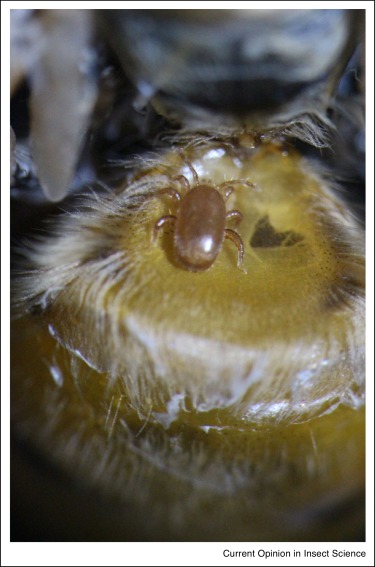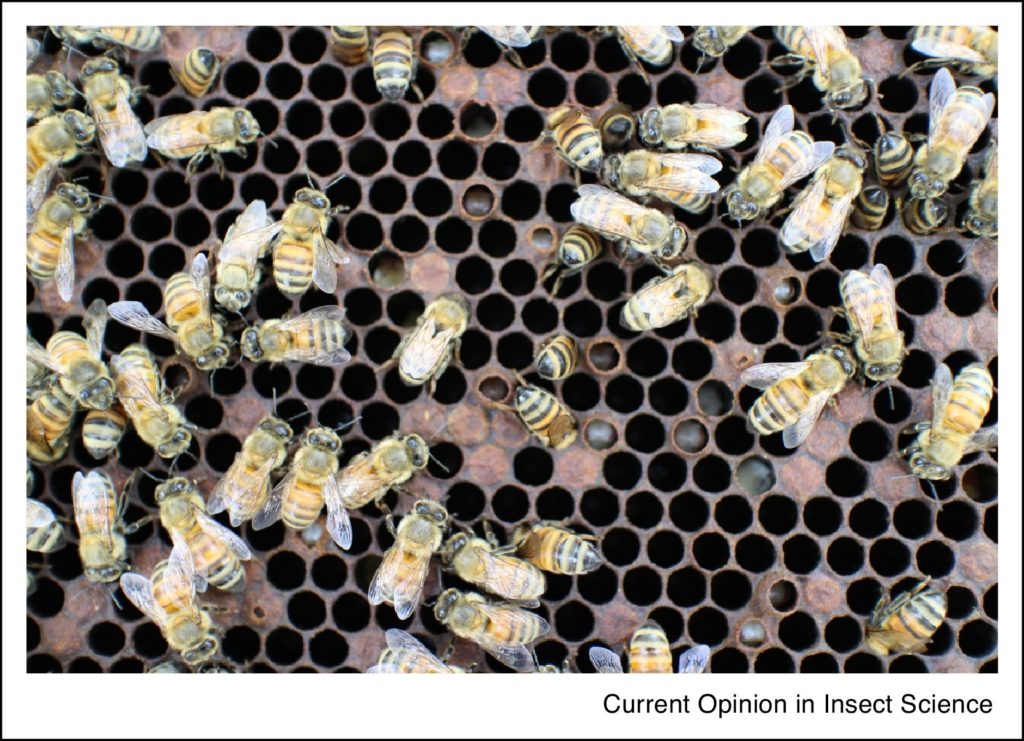Dr. Ramsey fundamentally changed our understanding of Varroa mites in his most recent publication Varroa destructor feeds primarily on honey bee fat body tissue and not hemolymph. His focus now is on a mite potentially more dangerous than Varroa – Tropilaelaps. Tropilaelaps were once a pest exclusive to open-air nesting giant Asian honey bees. Unfortunately, two of the four species have adapted to feed on Apis mellifera: T.clareae and T. mercedesae. Though both species pose a threat to honey bees, T. mercedesae has a wider geographic distribution and has been causing serious damage to managed hives in Asia and the Middle East. Dr. Ramsey believes we must address how to control and prevent the spread of these mites before they become a global threat worse than Varroa.

What we know:
T. mercedesae have a similar lifecycle to Varroa destructor, consisting of a phoretic and reproductive stage. Dr. Ramsey’s publication on Varroa determined that the phoretic stage is not actually commensalism but parasitism. Unlike Varroa, our current understanding of T. mercedesae is that the mites use the phoretic stage commensally for transportation into the hive.
Varroa conceal themselves between abdominal plates during the phoretic stage and reproduce under developing brood (Figure 1). T. mercedesae are even more inconspicuous as they are the color of wax comb and about half the size of Varroa. T. mercedesae hide between the abdomen and thorax where they cannot be reached. T. mercedesae are much faster than Varroa. Increased speed means they spend just hours instead of weeks latched onto adult bees before entering brood cells. For this reason, reproduction is three times faster in T. mercedesae than Varroa. Male Varroa cannot survive outside of the brood cell and therefore must inbreed. Male T. mercedesae can survive outside of brood comb to swap genetics with other female mites more readily. This rapid genetic evolution means treatment resistance is likely. Varroa and T. mercedesae can cohabitate in the hive, however T. mercedesae reproduce faster, occupy more brood cells and eventually competitively exclude the Varroa population.
T. mercedesae are smaller, faster, spend less time on adult hosts, and can mate outside of brood cells. For these reasons Dr. Ramsey believes T. mercedesae can only feed off larvae unlike Varroa which have proven to feed off adult honey bee hosts. Mature female Varroa drill a singular hole into the larvae to sustain herself and her progeny which lack the jaw strength to create their own feeding sites. Inversely, mature female T. mercedesae and her self-feeding progeny inflict more damage to the larvae by creating multiple feeding sites that develop into scars and immobilize the affected tissues. Damage to developing larvae often results in disease and decreased longevity. T. mercedesae spread many of the same diseases that Varroa do such as deformed wing virus and black queen cell virus. It has yet to be determined how many more diseases unique to T. mercedesae will be discovered as more research is done.

Asian bees have figured out methods to help eradicate them by utilizing a grooming dance that initiates hygienic behavior to dislodge the mites. Asian bees will leave infected brood capped so the mites are unable to leave and replicate. Since the mites are more destructive to brood, they cause irregular “bald brood” patterns (Figure 2). Honey bees do not have enough time to remove all the affected cells, so the brood begins to rot before being cleaned.
What’s next:
Dr. Ramsey has just scratched the surface of Tropilealaps mites. We still need to determine what tissues T. mercedesae are feeding on, what acaricides are effective or resistant, and more. He is currently seeking funding to continue his research on T. mercedesae in Thailand. It is in the best interest of beekeepers worldwide to address this pest proactively, not reactively. Honey bees have already reached their tipping point. Threats to honey bees have a cumulative effect. What will happen if one more threat is added? Will we lose the battle to save the bees?
Additional research:
Ecology, Life History, and Management of Tropilaelaps Mites
The ectoparasitic mite Tropilaelaps mercedesaereduces western honey bee, Apis mellifera, longevity and emergence weight, and promotes Deformed wing virus infections
Parasites, pathogens, and pests of honeybees in Asia
Risks to UK beekeeping from the parasitic miteTropilaelaps clareae and the small hive beetle,Aethina tumida
Behavioral responses underpinning resistance and susceptibility of honeybees to Tropilaelaps mercedesae
Interactions of Tropilaelaps mercedesae, honey bee viruses and immune response in Apis mellifera
